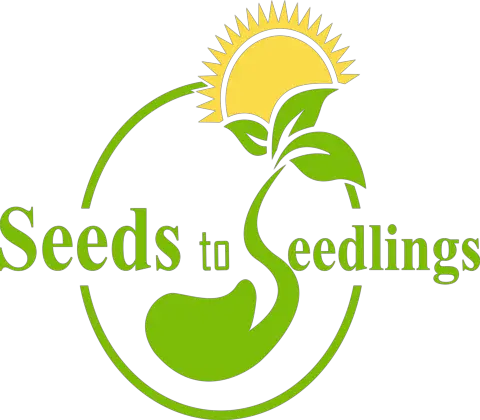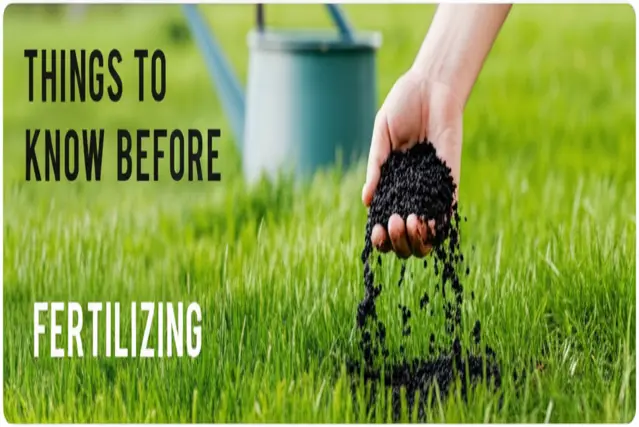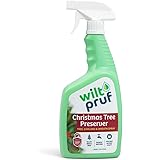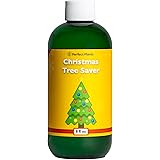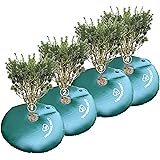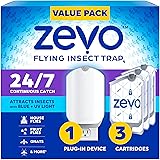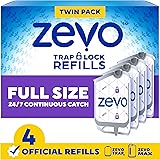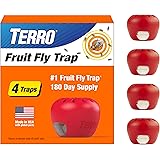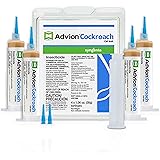Have you ever dreamed of a lush, vibrant lawn that’s the envy of the neighborhood? Or perhaps a bountiful garden teeming with colorful blooms and delicious vegetables? The secret to achieving these goals often lies in proper fertilization. But before you grab that bag of fertilizer, it’s crucial to understand the science behind feeding your plants.
Fertilizing isn’t just about sprinkling some granules and hoping for the best. It’s a strategic process that, when done correctly, can unlock the full potential of your garden and lawn. This comprehensive guide, updated for 2024, will walk you through everything you need to know before fertilizing, ensuring you get greener, healthier, and more rewarding results.
Why Fertilizing Matters: The Science of Plant Nutrition
Plants, like all living things, need nutrients to survive and thrive. They obtain these nutrients primarily from the soil. However, natural soil often lacks sufficient quantities of the essential elements required for optimal growth, especially in areas where the soil has been depleted by previous plant growth or altered by construction.
Fertilizing supplements these deficiencies, providing plants with the necessary building blocks for healthy development. Failing to fertilize can lead to stunted growth, yellowing leaves (chlorosis), poor flowering, and increased susceptibility to pests and diseases.
The Essential Nutrients: NPK and Beyond
When you look at a fertilizer bag, you’ll likely see three prominent numbers – NPK. These stand for Nitrogen (N), Phosphorus (P), and Potassium (K), the three macronutrients that plants need in the largest quantities. These are the primary macronutrients. But they aren’t the only nutrients plants need. There are secondary macronutrients (Calcium, Magnesium, Sulfur) and micronutrients (Iron, Manganese, Zinc, Copper, Boron, Molybdenum, Chlorine) that play crucial roles as well. Let’s break down each nutrient:
- Nitrogen (N): Promotes leaf growth and gives plants their green color. It’s essential for chlorophyll production. A nitrogen deficiency often manifests as yellowing leaves, especially older ones.
- Phosphorus (P): Supports root development, flowering, and fruit production. It is vital for energy transfer within the plant. Phosphorus deficiency can lead to stunted growth and poor flowering.
- Potassium (K): Enhances overall plant health, disease resistance, and stress tolerance. It plays a key role in water regulation and enzyme activation. Potassium deficiency can result in yellowing or browning leaf edges.
While NPK are critical, the secondary and micronutrients are equally important, albeit needed in smaller amounts. Deficiencies in these nutrients can also cause various problems.
For example, iron deficiency is common in alkaline soils and can cause chlorosis (yellowing) between the veins of younger leaves.
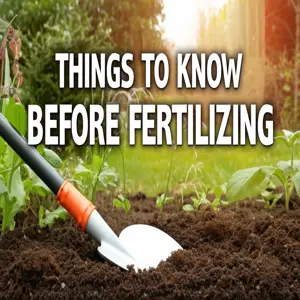
soil testing
Nutrient Uptake and Soil pH
Plants don’t just passively absorb nutrients from the soil. The process is more complex and influenced by factors like soil pH. Soil pH measures the acidity or alkalinity of the soil. A pH of 7 is neutral, below 7 is acidic, and above 7 is alkaline. Most plants prefer a slightly acidic to neutral pH (around 6.0 to 7.0). Why? Because soil pH dramatically affects nutrient availability.
At extreme pH levels (very acidic or very alkaline), certain nutrients become locked up in the soil and unavailable to plants, even if they are present. For example, iron, manganese, and phosphorus are less available in alkaline soils.
Therefore, knowing your soil pH and adjusting it if necessary is a critical step before fertilizing. You can amend soil pH by adding lime to raise the pH (make it less acidic) or sulfur to lower the pH (make it more acidic).
Step 1: The Crucial Soil Test – Know Before You Grow
Before you even think about buying fertilizer, conduct a soil test. This is the most important step in responsible and effective fertilization. Think of it as a doctor’s check-up for your soil. A soil test tells you precisely what nutrients are already present in your soil and what, if anything, is lacking. It also reveals your soil pH, organic matter content, and other important information.
Why Soil Testing is Essential
- Avoid Over-Fertilizing: Applying too much fertilizer can be detrimental to plants and the environment. Over-fertilization can lead to nutrient burn, water pollution, and imbalances in the soil.
- Target Deficiencies: A soil test identifies specific nutrient deficiencies, allowing you to choose a fertilizer that addresses those needs precisely.
- Save Money: By only applying the nutrients your plants need, you avoid wasting money on unnecessary fertilizers.
- Protect the Environment: Over-fertilization is a major contributor to water pollution. Soil testing helps you fertilize responsibly and minimize your environmental impact. Excess nitrogen and phosphorus runoff into waterways can lead to algal blooms, which deplete oxygen and harm aquatic life.
- Optimize Plant Growth: Correcting nutrient deficiencies and adjusting soil pH can significantly improve plant health and yield.
How to Conduct a Soil Test
- Gather Samples: Use a soil probe or trowel to collect samples from different areas of your lawn or garden. Take several samples (5-10) from a depth of 4-6 inches and mix them together in a clean bucket to create a composite sample. Avoid taking samples from areas that are obviously different (e.g., areas where you recently applied fertilizer or compost).
- Allow soil to air dry: Spread the soil on a clean surface and allow it to dry completely.
- Remove debris: Remove any rocks, roots, or other debris from the soil.
- Follow Lab Instructions: Submit your composite sample to a reputable soil testing lab. Many state universities offer soil testing services, and there are also commercial labs available. Follow the lab’s instructions carefully for sample preparation and submission.
- Interpret the Results: Once you receive your soil test results, carefully review them. The report will typically include information on nutrient levels (NPK, micronutrients), pH, organic matter content, and recommendations for fertilizer application. Most labs will provide recommendations based on what plants you are growing or intend to grow.
Understanding Your Soil Test Report
Soil test reports can seem daunting at first, but they are relatively straightforward once you understand the key components. Here’s a breakdown:
- Nutrient Levels: The report will indicate the levels of essential nutrients (NPK, etc.) in your soil, typically expressed as parts per million (ppm) or pounds per acre. The report will usually categorize these levels as “low,” “medium,” “high,” or “very high.”
- pH: The report will indicate your soil pH. As mentioned earlier, most plants prefer a slightly acidic to neutral pH (around 6.0 to 7.0).
- Organic Matter: The report will indicate the percentage of organic matter in your soil. Organic matter is beneficial for soil health as it improves water retention, drainage, and nutrient availability. A higher percentage is generally better.
- Cation Exchange Capacity (CEC): CEC measures the soil’s ability to hold onto nutrients. Soils with higher CEC generally have better fertility.
- Recommendations: The report will provide recommendations for fertilizer application based on your soil test results and the type of plants you are growing. These recommendations will typically specify the type of fertilizer to use and the amount to apply.
Example: Let’s say your soil test report shows that your soil is low in phosphorus and has a pH of 7.5. The report might recommend applying a fertilizer with a high phosphorus content (e.g., 10-20-10) and suggest amending the soil with sulfur to lower the pH. *It’s important to follow these recommendations carefully to avoid over-fertilizing or applying the wrong type of fertilizer.*
Trend Watch: More advanced soil tests are becoming available that analyze the soil microbiome, providing insights into the beneficial bacteria and fungi present in your soil. These tests can help you understand the overall health of your soil and identify potential problems, such as disease-causing pathogens.
| Parameter | Result | Optimal Range | Recommendation |
|---|---|---|---|
| Nitrogen (N) | Low | Medium-High | Apply nitrogen-rich fertilizer |
| Phosphorus (P) | Very Low | Medium-High | Apply phosphorus-rich fertilizer |
| Potassium (K) | Medium | Medium-High | No action needed |
| pH | 7.8 | 6.0-7.0 | Apply soil acidifier (e.g., sulfur) |
| Organic Matter | 2.5% | 3-5% | Amend with compost |
Step 2: Choosing the Right Fertilizer – Understanding Labels and Types
Once you have your soil test results, you can choose the right fertilizer. Fertilizers come in various forms, each with its own advantages and disadvantages. Understanding the different types of fertilizers and how to read fertilizer labels is crucial for making informed decisions.
Reading Fertilizer Labels: The NPK Ratio and Beyond
As mentioned earlier, the three numbers on a fertilizer label represent the percentage of nitrogen (N), phosphorus (P), and potassium (K) by weight. For example, a 10-10-10 fertilizer contains 10% nitrogen, 10% phosphorus, and 10% potassium. This is known as the NPK ratio.
The NPK ratio indicates the relative proportion of each nutrient in the fertilizer. A fertilizer with a higher first number (N) is considered nitrogen-rich, while a fertilizer with a higher second number (P) is considered phosphorus-rich, and so on.
Beyond NPK: Fertilizer labels also often include information about secondary nutrients (calcium, magnesium, sulfur) and micronutrients (iron, manganese, zinc, copper, boron, molybdenum, chlorine). Some fertilizers are specifically formulated to address micronutrient deficiencies. The label will also indicate whether the fertilizer is organic or synthetic, the source of the nutrients, and application instructions.
Read More: Can Monstera Get Sunburn? Preventing Leaf Damage
Types of Fertilizers: Organic vs. Synthetic
The two main categories of fertilizers are organic and synthetic (also known as inorganic or chemical). Each type has its own pros and cons:
- Organic Fertilizers: Derived from natural sources, such as animal manure, compost, bone meal, blood meal, and plant-based materials. Organic fertilizers release nutrients slowly over time as they decompose, improving soil structure and promoting beneficial microbial activity. They are generally considered more environmentally friendly than synthetic fertilizers.
- Pros: Slow-release, improve soil health, environmentally friendly, less risk of nutrient burn.
- Cons: Lower nutrient concentrations, slower results, may contain pathogens if not properly composted, can be more expensive.
- Examples: Compost, manure, bone meal, blood meal, fish emulsion, kelp meal.
- Synthetic Fertilizers: Manufactured chemically and provide nutrients in a readily available form. Synthetic fertilizers are typically more concentrated than organic fertilizers and can produce faster results. However, they do not improve soil structure and can potentially harm beneficial soil microbes if overused. They are also more prone to leaching and runoff, contributing to water pollution.
- Pros: High nutrient concentrations, fast-acting, readily available, often less expensive.
- Cons: Can harm soil microbes, prone to leaching and runoff, risk of nutrient burn, do not improve soil structure.
- Examples: Ammonium nitrate, urea, superphosphate, potassium chloride.
Choosing the Right Type: The best type of fertilizer depends on your specific needs and preferences. If you prioritize soil health and environmental sustainability, organic fertilizers are a good choice. If you need a quick boost of nutrients and are willing to carefully manage the application, synthetic fertilizers can be effective. Many gardeners use a combination of both organic and synthetic fertilizers to achieve the best results. Start with organic amendments to the soil structure and add synthetic sparingly to address specific deficiencies if needed.
Fertilizer Formulations: Granular, Liquid, and Slow-Release
Fertilizers also come in different formulations, each with its own application method and release rate:
- Granular Fertilizers: Solid fertilizers in the form of granules. They are typically applied by spreading them evenly over the soil surface and then watering them in. Granular fertilizers can be either slow-release or fast-release, depending on the coating and composition.
- Liquid Fertilizers: Concentrated fertilizers that are diluted with water and applied as a foliar spray or soil drench. Liquid fertilizers are fast-acting and can be easily absorbed by plants. They are particularly useful for correcting nutrient deficiencies quickly.
- Slow-Release Fertilizers: Granular fertilizers that are coated with a polymer or other material that controls the release of nutrients over time. Slow-release fertilizers provide a steady supply of nutrients to plants, reducing the risk of nutrient burn and minimizing the need for frequent applications. They are great for beginners, but also benefit the experienced gardener.
| Fertilizer Type | Nutrient Release | Application Method | Pros | Cons |
|---|---|---|---|---|
| Organic | Slow | Soil amendment, side-dressing | Improves soil health, environmentally friendly | Lower nutrient concentration, slower results |
| Synthetic | Fast | Granular, liquid, foliar spray | High nutrient concentration, fast-acting | Can harm soil microbes, risk of nutrient burn |
| Granular | Variable (slow or fast) | Spreading, incorporation | Easy to apply, various formulations | Can be uneven if not applied properly |
| Liquid | Fast | Foliar spray, soil drench | Fast-acting, easily absorbed | Needs frequent application, can burn leaves |
| Slow-Release | Slow, controlled | Spreading, incorporation | Provides steady nutrients, reduces burn risk | Can be more expensive |
Specialized Fertilizers
In addition to the general types of fertilizers, there are also specialized fertilizers formulated for specific plants or purposes:
- Lawn Fertilizers: Typically high in nitrogen to promote lush green growth. Often contain weed killers or crabgrass preventers.
- Rose Fertilizers: Formulated to encourage abundant blooms. Often contain micronutrients like iron and magnesium.
- Vegetable Fertilizers: Balanced NPK ratio to support both vegetative growth and fruit production.
- Acid-Loving Plant Fertilizers: Formulated for plants that prefer acidic soil, such as azaleas, rhododendrons, and blueberries. They usually contain sulfur to lower soil pH.
- Starter Fertilizers: High in phosphorus to promote root development in newly transplanted plants.
Current Trend: There is a growing trend towards using biofertilizers, which contain beneficial microorganisms that enhance nutrient availability and promote plant growth. These microorganisms can fix nitrogen from the air, solubilize phosphorus, and produce plant growth hormones.
Step 3: Determining the Right Amount – Calculating Fertilizer Application Rates
Applying the right amount of fertilizer is just as important as choosing the right type. Over-fertilizing can harm plants, pollute the environment, and waste money. Under-fertilizing, on the other hand, can limit plant growth and yield. Calculating the correct fertilizer application rate requires careful attention to the fertilizer label and your soil test recommendations.
Understanding Fertilizer Analysis and Application Rates
Fertilizer labels typically express nutrient content as a percentage by weight (NPK ratio). Application rates are usually expressed as pounds of fertilizer per 1,000 square feet or pounds of fertilizer per acre. It’s crucial to convert these units correctly to avoid over- or under-fertilizing.
Example: Let’s say your soil test recommends applying 1 pound of nitrogen per 1,000 square feet. You have a 10-10-10 fertilizer. This means that 10% of the fertilizer by weight is nitrogen. To calculate how much of the 10-10-10 fertilizer you need to apply to get 1 pound of nitrogen, you can use the following formula:
Amount of fertilizer = (Recommended amount of nutrient) / (Percentage of nutrient in fertilizer)
In this case:
Amount of fertilizer = (1 pound of nitrogen) / (0.10) = 10 pounds of 10-10-10 fertilizer
Therefore, you would need to apply 10 pounds of the 10-10-10 fertilizer per 1,000 square feet to provide 1 pound of nitrogen.
Many online fertilizer calculators and apps can help you with these calculations. These tools can simplify the process and ensure that you are applying the correct amount of fertilizer.
Considering Soil Type and Plant Needs
The recommended fertilizer application rate may also need to be adjusted based on your soil type and the specific needs of your plants. Sandy soils tend to leach nutrients more quickly than clay soils, so you may need to apply fertilizer more frequently in smaller amounts. Plants with high nutrient requirements, such as heavy-feeding vegetables like tomatoes and corn, will require more fertilizer than plants with lower nutrient requirements.
General Guidelines: As a general rule, it’s better to err on the side of under-fertilizing rather than over-fertilizing. You can always add more fertilizer later if needed, but it’s difficult to remove excess fertilizer from the soil.
Calculating Area for Fertilizer Application
Accurately calculating the area you need to fertilize is essential for applying the correct amount of fertilizer. For lawns, you can measure the length and width of the lawn and multiply them together to get the area in square feet. For gardens, you can divide the garden into smaller, more manageable sections and calculate the area of each section separately. Don’t forget to subtract areas covered by buildings, patios, or other non-plantable surfaces.
| Parameter | Value |
|---|---|
| Recommended Nitrogen Application Rate | 1 lb N per 1000 sq ft |
| Fertilizer Analysis | 20-10-10 |
| Area to Fertilize | 2000 sq ft |
| Calculation | (1 lb N / 1000 sq ft) / 0.20 = 5 lbs fertilizer per 1000 sq ft |
| Total Fertilizer Needed | 5 lbs/1000 sq ft * 2000 sq ft = 10 lbs |
Step 4: Application Techniques – Getting the Fertilizer to the Roots
The way you apply fertilizer can significantly impact its effectiveness. Applying fertilizer evenly and at the right time ensures that plants receive the nutrients they need when they need them most. Different application methods are suited for different fertilizer types and plant needs.
Broadcast Spreading
Broadcast spreading involves scattering granular fertilizer evenly over a large area, such as a lawn or garden bed. This method is best suited for granular fertilizers and is ideal for providing a general nutrient boost to a large area. Use a fertilizer spreader for even distribution.
Banding
Banding involves applying fertilizer in a narrow band along the row of plants or around the base of individual plants. This method is more targeted than broadcast spreading and can be useful for providing a concentrated dose of nutrients to specific areas. Banding is often used for vegetable gardens and row crops.
Side-Dressing
Side-dressing involves applying fertilizer to the side of established plants, usually a few inches away from the stem. This method is often used to provide a supplemental dose of nutrients to plants during the growing season. Side-dressing is commonly used for vegetables and other crops that have high nutrient requirements.
Foliar Feeding
Foliar feeding involves spraying liquid fertilizer directly onto the leaves of plants. This method is a fast-acting way to deliver nutrients directly to the plant tissues. Foliar feeding is particularly useful for correcting micronutrient deficiencies and providing a quick boost of nutrients during times of stress. It is best done early in the morning or late in the evening to avoid leaf burn.
Fertigation
Fertigation involves injecting liquid fertilizer into the irrigation system. This method allows you to deliver nutrients directly to the roots of plants along with water. Fertigation is commonly used in commercial agriculture and can be a convenient way to fertilize large areas. However, it requires specialized equipment and careful monitoring to ensure that the fertilizer is applied evenly.
Timing is Key: When to Fertilize for Optimal Results
The timing of fertilizer application is just as important as the application method. Fertilizing at the wrong time can be ineffective or even harmful to plants. As a general rule, it’s best to fertilize plants when they are actively growing and need the most nutrients. Avoid fertilizing during periods of dormancy or extreme stress, such as drought or heat waves.
Lawns: Lawns are typically fertilized in the spring and fall. Spring fertilization promotes new growth and helps the lawn recover from winter damage. Fall fertilization helps the lawn build up reserves for the winter and promotes root development. Avoid fertilizing lawns during the heat of summer, as this can stress the grass.
Gardens: Gardens are typically fertilized at planting time and then again during the growing season. At planting time, you can incorporate fertilizer into the soil to provide a base level of nutrients. During the growing season, you can side-dress or foliar feed plants as needed.
| Method | Description | Best Use | Considerations |
|---|---|---|---|
| Broadcast Spreading | Scattering fertilizer over a large area | Lawns, large garden beds | Use a spreader for even distribution |
| Banding | Applying fertilizer in a narrow band | Vegetable gardens, row crops | Targeted application |
| Side-Dressing | Applying fertilizer to the side of established plants | Vegetables, crops with high nutrient needs | Supplemental feeding |
| Foliar Feeding | Spraying liquid fertilizer onto leaves | Correcting deficiencies, quick boost | Apply early morning or late evening |
| Fertigation | Injecting fertilizer into irrigation system | Commercial agriculture, large areas | Requires specialized equipment |
Step 5: Watering After Fertilizing – Activation and Absorption
Watering after fertilizing is essential for activating the fertilizer and ensuring that the nutrients are absorbed by the plant roots. Water helps to dissolve the fertilizer and carry the nutrients down into the soil where the roots can access them. The timing and amount of water are crucial for optimal results.
The Importance of Watering
- Dissolving Fertilizer: Water dissolves granular fertilizers, releasing the nutrients into the soil solution.
- Transporting Nutrients: Water carries the dissolved nutrients down to the root zone, where they can be absorbed by the plant roots.
- Preventing Burn: Watering helps to dilute the fertilizer, reducing the risk of nutrient burn on the plant leaves and roots.
Read More: Natural Pest Control with Vinegar for Herbs: Herb Garden Savior
When and How Much to Water
The best time to water after fertilizing is immediately after application. This helps to dissolve the fertilizer quickly and prevent it from being washed away by rain or wind. The amount of water you need to apply will depend on the type of fertilizer you used and the soil conditions. As a general rule, you should water thoroughly enough to moisten the soil to a depth of several inches.
Granular Fertilizers: Water thoroughly after applying granular fertilizers to dissolve the granules and carry the nutrients down into the soil. Aim for about 1 inch of water.
Liquid Fertilizers: If you are using a liquid fertilizer, you may not need to water as much, as the nutrients are already dissolved in water. However, it’s still a good idea to water lightly to help the fertilizer penetrate the soil.
Foliar Feeding: If you are foliar feeding, avoid watering immediately after application, as this can wash the fertilizer off the leaves. Allow the fertilizer to dry on the leaves for several hours before watering.
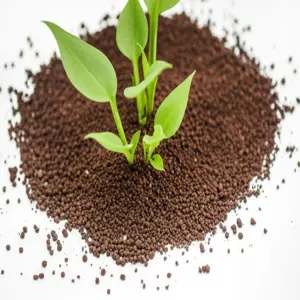
fertilizer types
Adjusting Watering Based on Weather Conditions
It’s important to adjust your watering schedule based on the weather conditions. During periods of hot, dry weather, you may need to water more frequently to prevent the soil from drying out. During periods of wet weather, you may need to reduce watering to avoid overwatering and leaching of nutrients. Monitoring the soil moisture levels is the best way to determine how much water to apply.
Overwatering and Underwatering: Potential Problems
Both overwatering and underwatering can cause problems after fertilizing. Overwatering can lead to leaching of nutrients, waterlogged soil, and root rot. Underwatering can prevent the fertilizer from dissolving and being absorbed by the plant roots. Monitoring the soil moisture levels and adjusting your watering schedule as needed is essential to avoid these problems.
Step 6: Monitoring Plant Health – Observing the Results of Fertilization
After fertilizing, it’s important to monitor your plants closely to observe the results of the fertilization. Look for signs of improved growth, such as greener leaves, increased flowering, and higher yields. Also, watch for signs of over-fertilization or nutrient deficiencies.
Signs of Healthy Growth
- Greener Leaves: One of the first signs of successful fertilization is greener, more vibrant leaves.
- Increased Growth: Plants should show signs of increased growth, such as new leaves, longer stems, and larger root systems.
- More Flowers and Fruits: Flowering plants should produce more flowers, and fruiting plants should produce more fruits.
- Improved Disease Resistance: Healthy plants are generally more resistant to pests and diseases.
Signs of Over-Fertilization
Over-fertilization can be just as harmful as under-fertilization. Watch for the following signs of over-fertilization:
- Leaf Burn: The edges of the leaves may turn brown or yellow.
- Stunted Growth: Plants may stop growing or even shrink in size.
- Salt Buildup: A white crust may form on the soil surface.
- Wilting: Plants may wilt even when the soil is moist.
Identifying Nutrient Deficiencies
If your plants are not showing signs of healthy growth after fertilizing, they may still be suffering from nutrient deficiencies. Common nutrient deficiency symptoms include:
- Nitrogen Deficiency: Yellowing of older leaves.
- Phosphorus Deficiency: Stunted growth, purplish leaves.
- Potassium Deficiency: Yellowing or browning of leaf edges.
- Iron Deficiency: Yellowing between the veins of younger leaves (chlorosis).
- Magnesium Deficiency: Yellowing between the veins of older leaves.
If you suspect a nutrient deficiency, conduct another soil test to confirm the diagnosis and determine the best course of action. You may need to adjust your fertilizer application or amend the soil to correct the deficiency.
Adjusting Your Fertilization Strategy
Fertilizing is not a one-time event. It’s an ongoing process that requires monitoring and adjustments. Based on the results of your observations, you may need to adjust your fertilization strategy to better meet the needs of your plants. This may involve changing the type of fertilizer you use, adjusting the application rate, or modifying your watering schedule. The key is to pay attention to your plants and respond to their needs accordingly.
Environmental Considerations and Regulations
Responsible fertilization is essential for protecting the environment. Over-fertilization can lead to water pollution, soil degradation, and other environmental problems. It’s also important to be aware of local regulations regarding fertilizer use.
Water Pollution and Fertilizer Runoff
Excess nitrogen and phosphorus from fertilizers can runoff into waterways, leading to algal blooms and other forms of water pollution. Algal blooms can deplete oxygen in the water, harming aquatic life and making the water unsafe for swimming and drinking. To minimize fertilizer runoff, avoid over-fertilizing, apply fertilizer during dry weather, and use slow-release fertilizers.
Soil Degradation
Overuse of synthetic fertilizers can harm beneficial soil microbes and degrade soil structure. This can lead to reduced soil fertility, increased erosion, and other soil problems. To protect soil health, use organic fertilizers, practice crop rotation, and avoid tilling the soil excessively.
Local Regulations on Fertilizer Use
Many municipalities have regulations on fertilizer use to protect water quality and the environment. These regulations may restrict the type of fertilizer you can use, the amount you can apply, and the time of year you can fertilize. Be sure to check with your local government to find out about any applicable regulations.
Example: Many areas restrict the use of phosphorus fertilizers unless a soil test confirms a phosphorus deficiency. This is because phosphorus is a major contributor to water pollution.
Best Practices for Responsible Fertilization
- Conduct a Soil Test: Always conduct a soil test before fertilizing to determine the nutrient needs of your plants.
- Choose the Right Fertilizer: Select a fertilizer that is appropriate for your plants and soil conditions.
- Apply the Correct Amount: Calculate the correct fertilizer application rate and apply it evenly.
- Water After Fertilizing: Water thoroughly after fertilizing to activate the fertilizer and prevent nutrient burn.
- Monitor Plant Health: Observe your plants closely for signs of healthy growth or nutrient deficiencies.
- Follow Local Regulations: Be aware of any local regulations on fertilizer use.
- Use Organic Fertilizers: Whenever possible, use organic fertilizers to improve soil health and reduce environmental impact.
- Avoid Over-Fertilizing: It’s better to err on the side of under-fertilizing rather than over-fertilizing.
Statistic: According to the EPA, agriculture is a major source of nutrient pollution in the United States. Implementing responsible fertilization practices can significantly reduce this pollution.
Troubleshooting Common Fertilizing Problems
Even with careful planning, problems can sometimes arise after fertilizing. Here’s how to troubleshoot some common issues:
Nutrient Burn
Problem: Leaf tips and edges turn brown, plants may wilt.
Cause: Over-fertilization, especially with synthetic fertilizers.
Solution: Flush the soil with plenty of water to dilute the fertilizer. Avoid fertilizing for several weeks and then apply fertilizer at a lower rate. In extreme cases, you may need to transplant the plant into fresh soil.
Yellowing Leaves (Chlorosis)
Problem: Leaves turn yellow, often between the veins.
Cause: Nutrient deficiency (iron, magnesium), high soil pH, root damage.
Solution: Conduct a soil test to identify the deficiency. Amend the soil with chelated iron or magnesium sulfate if necessary. Lower the soil pH if it is too high. Improve drainage to prevent root rot.
Stunted Growth
Problem: Plants are not growing or are growing very slowly.
Cause: Under-fertilization, poor soil conditions, root damage, disease.
Solution: Conduct a soil test to determine if there are any nutrient deficiencies. Improve soil drainage and aeration. Check for signs of root damage or disease and treat accordingly.
FAQ: Fertilizing Your Lawn & Garden (2024 Guide)
1. How often should I fertilize my lawn?
- Cool-season grasses (e.g., Kentucky bluegrass, fescue): Fertilize in early spring and fall.
- Warm-season grasses (e.g., Bermuda, Zoysia): Fertilize in late spring and summer.
- Avoid fertilizing in extreme heat or drought.
2. What’s the best fertilizer for vegetables?
- Use a balanced fertilizer (10-10-10 or 5-5-5) at planting.
- For fruiting plants (tomatoes, peppers), switch to a higher phosphorus (e.g., 5-10-10) when flowering starts.
- Organic options like compost, fish emulsion, or worm castings work well too.
3. Can I fertilize right after mowing?
- Yes, but wait 24–48 hours before mowing again to allow nutrients to absorb.
- Water the lawn immediately after fertilizing to prevent burn.
4. Why are my plants turning yellow after fertilizing?
- Over-fertilization (nutrient burn) → Flush soil with water.
- Nitrogen deficiency → Apply a nitrogen-rich fertilizer.
- Iron deficiency (chlorosis) → Use chelated iron or lower soil pH.
5. Is organic fertilizer better than synthetic?
| Organic | Synthetic |
|---|---|
| Slow-release, improves soil health | Fast-acting, precise nutrients |
| Eco-friendly, fewer burn risks | Can harm soil microbes if overused |
| Best for long-term soil health | Best for quick fixes |
6. How do I prevent fertilizer runoff?
- Avoid over-fertilizing (follow soil test recommendations).
- Use slow-release fertilizers.
- Water lightly after application (don’t flood).
- Don’t fertilize before heavy rain.
7. Can I use lawn fertilizer on my garden?
- Not recommended. Lawn fertilizers are high in nitrogen (promotes leafy growth), while gardens need balanced nutrients.
- Use vegetable-specific or all-purpose garden fertilizers instead.
8. What’s the best time of day to fertilize?
- Early morning or late afternoon (avoid midday heat).
- For foliar sprays, apply in the evening to prevent leaf burn.
9. How long does it take for fertilizer to work?
- Liquid fertilizers: 24–48 hours.
- Granular fertilizers: 5–10 days (faster if watered in).
- Slow-release fertilizers: 2–6 weeks.
10. Should I fertilize in winter?
- No! Most plants are dormant and won’t absorb nutrients.
- Exceptions: Winter crops (kale, spinach) or indoor plants (use diluted fertilizer).
Conclusion: Fertilize Smart for a Thriving Garden in 2024
Fertilizing isn’t just about dumping nutrients—it’s a science-backed strategy to maximize plant health while protecting the environment. By following these steps, you’ll avoid common mistakes and achieve lush lawns, vibrant flowers, and bountiful harvests:
✅ Test Your Soil First – Avoid guesswork; know exactly what your plants need.
✅ Choose the Right Fertilizer – Match NPK ratios to your plants’ growth stage.
✅ Apply Correctly – Use the right method (broadcast, banding, foliar) at the right time.
✅ Water Wisely – Activate granules and prevent nutrient burn.
✅ Monitor & Adjust – Watch for signs of over/under-fertilizing and adapt.
Pro Tip: Keep a gardening journal to track fertilization dates, soil test results, and plant responses. This helps refine your approach year after year.
Whether you’re growing a prize-winning lawn or a kitchen garden, smart fertilization makes all the difference. Happy growing in 2025! 🌱
Auto Amazon Links: No products found.
Wilt-Pruf® Christmas Tree/Cutting Preserver Spray |Preserves Christmas Trees, Wreaths, Garlands, Cuttings and Carved Pumpkins | Reduces Needle Drop | Keeps Cut Trees Fresh Longer | Natural (32 oz)
$21.99 (as of November 6, 2025 20:33 GMT +00:00 - More info- Product prices and availability are accurate as of the date/time indicated and are subject to change. Any price and availability information displayed on [relevant Amazon Site(s), as applicable] at the time of purchase will apply to the purchase of this product.
Perfect Plants Christmas Tree Saver 8oz. | Easy Use Xmas Tree Preserver Food | Have Healthy Green Christmas Trees All Holiday Season
$13.99 (as of November 6, 2025 20:33 GMT +00:00 - More info- Product prices and availability are accurate as of the date/time indicated and are subject to change. Any price and availability information displayed on [relevant Amazon Site(s), as applicable] at the time of purchase will apply to the purchase of this product.
HoHoHoH2o Automatic Christmas Tree Watering System Device, Santa’s Tree Helper Keeps Your Christmas Tree Healthy and Fresh, Refillable 2.5 gallons Capacity Box - Silver/Festive
$99.95 (as of November 6, 2025 20:33 GMT +00:00 - More info- Product prices and availability are accurate as of the date/time indicated and are subject to change. Any price and availability information displayed on [relevant Amazon Site(s), as applicable] at the time of purchase will apply to the purchase of this product.
Christmas Tree Watering Funnel-Watertight Christmas Tree Funnel,Long Christmas Tree Watering System,Christmas Tree Waterer Xmas Plant Watering Tool for Real Live Tall Chirstmas Trees
$16.99 (as of November 6, 2025 20:33 GMT +00:00 - More info- Product prices and availability are accurate as of the date/time indicated and are subject to change. Any price and availability information displayed on [relevant Amazon Site(s), as applicable] at the time of purchase will apply to the purchase of this product.
4-Pack Tree Watering Ring, Tree Watering Bags Slow Release 20 Gallon, Tree Bags for Watering for Slow Drip 6 to 9 Hours, Low-Profile Watering Bags for New Trees, Multi-Trunk Trees and Shrubs
$47.99 (as of November 6, 2025 20:33 GMT +00:00 - More info- Product prices and availability are accurate as of the date/time indicated and are subject to change. Any price and availability information displayed on [relevant Amazon Site(s), as applicable] at the time of purchase will apply to the purchase of this product.
Zevo Flying Insect Trap & 3 Refill Cartridges - Plug in Fly Trap & Indoor Bug Catcher for Gnats, House & Fruit Flies - Blue & UV Light Technology, Mess-Free Alternative to Bug Zapper
$25.96 (as of November 8, 2025 02:59 GMT +00:00 - More info- Product prices and availability are accurate as of the date/time indicated and are subject to change. Any price and availability information displayed on [relevant Amazon Site(s), as applicable] at the time of purchase will apply to the purchase of this product.
Zevo Flying Insect Trap Official Refill Cartridges - Fits Both Zevo Trap & MAX Indoor Fly Trap - Authentic Trap+Lock Technology to Catch Gnats, House & Fruit Flys (4 Official Refill Cartridges)
$14.49 (as of November 8, 2025 02:59 GMT +00:00 - More info- Product prices and availability are accurate as of the date/time indicated and are subject to change. Any price and availability information displayed on [relevant Amazon Site(s), as applicable] at the time of purchase will apply to the purchase of this product.
TERRO Fruit Fly Traps for Indoors (4 Pack) + 180 Days of Lure Supply
$15.99 (as of November 8, 2025 02:59 GMT +00:00 - More info- Product prices and availability are accurate as of the date/time indicated and are subject to change. Any price and availability information displayed on [relevant Amazon Site(s), as applicable] at the time of purchase will apply to the purchase of this product.
TERRO Ant Killer Bait Stations T300B - Liquid Bait to Eliminate Ants - Bait System - 12 Count Stations for Effective Indoor Ant Control
$11.44 (as of November 8, 2025 02:59 GMT +00:00 - More info- Product prices and availability are accurate as of the date/time indicated and are subject to change. Any price and availability information displayed on [relevant Amazon Site(s), as applicable] at the time of purchase will apply to the purchase of this product.
Advion Cockroach Gel Bait, 4 Tubes x 30-Grams, 1 Plunger and 2 Tips, German Roach Insect Pest Control, Indoor and Outdoor Use, Roach Killer Gel for American, German and Other Major Cockroach Species
$27.19 (as of November 8, 2025 02:59 GMT +00:00 - More info- Product prices and availability are accurate as of the date/time indicated and are subject to change. Any price and availability information displayed on [relevant Amazon Site(s), as applicable] at the time of purchase will apply to the purchase of this product.
